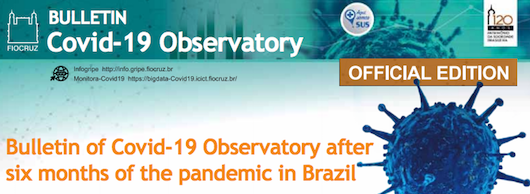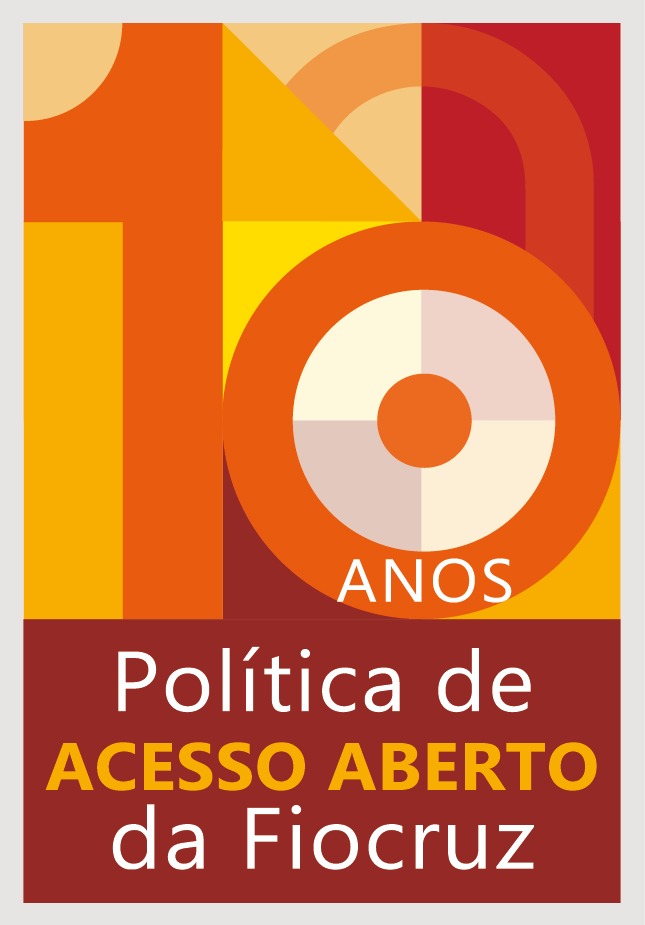Covid-19 Observatory of Fiocruz releases a Bulletin on the six months of pandemic in Brazil
06/11/2020
Regina Castro
To mark the six months of Covid-19 in Brazil, the Oswaldo Cruz Foundation (Fiocruz) has published a special edition of its Covid-19 Observatory Bulletin with an assessment of the pandemic that has been having effects on the health of populations and challenging science all over the world. Made by a multidisciplinary team of researchers of the Foundation, the investigation includes the main aspects related to Covid-19, such as social, economic, structural, or epidemiological dimensions. The publication brings together analytic texts, data, and graphics that go deep in themes such as the organization of health services, impacts of the disease on health professionals and other workers, and issues related to racial inequalities, indigenous peoples, the elderly, populations in the slums, and challenges involved in bioethics and social justice. A timeline highlights the most significant events up to now, and a final text lists Fiocruz actions in the response to the pandemic.
Click on the image to see the documentThe Bulletin shows that the evolution curve of cases and deaths by Covid-19 in Brazil has displayed, since the beginning of the pandemic, a pattern that differs from those of other countries, and points to the worrying maintenance of a very high level of deaths in the country in the next three months if the current scenario remains unchanged. The study reveals the slow growth in the number of cases and the formation of a long transmission level since June, with a slight drop after September. Figures of Severe Acute Respiratory Infection (SARI) show that, even as numbers have fallen, the country is still trapped in a high level of cases and deaths.
Impact on the elderly
October 2020 is the 30th anniversary of the International Day for Older Persons. However, the figures for cases and deaths by Covid-19 made available by the MonitoraCovid-19 bulletin by Fiocruz, based on the Influenza Epidemiological Surveillance Information System (Sivep-Gripe), leave very little room for optimism.
According to the analysis, up to October 6, 210,007 cases and 100,059 deaths of people over 60 were reported, corresponding to 53.1% of the total number of cases and to 75.2% of the deaths, proof of the higher severity of the disease among the elderly population. These numbers represent a reduction of 0.41% of the male elderly population and of 0.25% of the female elderly population. One of the demographic consequences of the pandemic is the intensification of the trend of the feminization of the Brazilian elderly population.
Vaccines: caution and social justice
The vaccine against Covid-19 was also tackled in the publication. According to the researchers, the vaccine should be considered an additional strategy, and not a unique solution to fight the pandemic.
The Bulletin also highlights the importance of universal access to vaccines and the vaccination strategies that must be adopted in the country to make sure they are in line with epidemic scenarios and can contribute to the wider strategy of pandemic fighting.
Covid-19 in the favelas
In large urban centers, the impact of Covid-19 in the favelas has proven to be more intense due to structural vulnerabilities. According to the analysis, the higher rates of Covid-19 in neighborhoods without favelas or with low concentrations of favelas, when compared to neighborhoods with a very high concentration of favelas, can be partly explained by low access to testing in the population of these territories.
It was observed that neighborhoods with a high or very high concentration of favelas show higher lethality (19.47%), double that of neighborhoods without favelas (9.23%). According to the researchers, this points to lack of access to diagnosis within a suitable period of time, as well as issues of access to health services of higher complexity.
Race and color
In the period under analysis, the percentage of deaths by Covid-19 according to race/color was 48.2% among black people and 31.12% among whites, but there was 20.15% in this category who “did not inform” their race or color. The incidence rate of the disease is 44.6% among black people, 37.04% in Asian people, 0.17% among indigenous peoples, and 14.19% “ignored”. The researchers state that this result shows the foundations of structural racism in Brazil, expressed in the immense vulnerability and precarious conditions of black lives.
Indigenous peoples and Covid-19
Indigenous peoples are particularly vulnerable to Covid-19 and its severe consequences, due to historical and socioeconomic factors. The circulation of the SARS-CoV-2 in Brazil has resulted in a progressive proportion of indigenous people in municipalities at high immediate risk for the pandemic, quickly affecting the 34 Special Indigenous Sanitary Districts (DSEI). Depending on the age group, the mortality rate among indigenous can be up to 150% higher than among non-indigenous.
The data made available by the Special Secretary of Indigenous Health (Sesai) show mortality rates by Covid-19 progressively higher after 50 years of age among indigenous people when compared to the general population. This fact should be taken as a warning regarding the sociocultural impact of the pandemic: older individuals are the guardians of traditional knowledge, languages, and memory of the historical fights of these peoples.
Situation of health workers in the Covid-19 context
One of the groups with a higher risk of contamination by Covid-19 is that of health workers. In addition to direct contact and exposure to high viral loads, work overload, and changes in protocols and routines, another relevant factor that has increased the exposure of this group is the increased number of beds through field hospitals.
According to the Observatory of the Federal Nursing Council (Cofen), on October 4, 2020, there were 40,068 cases and 441 deaths reported among their professionals (nurses, technicians, and auxiliaries). Women correspond to 85% of the cases and 63% of the deaths - they represent 85% of the workforce of this segment.
The Bulletin emphasizes that formal workers, such as those employed by slaughterhouses, were strongly hit by Covid-19. According to the National Confederation of Food Workers, about 125 thousand workers are estimated to have been infected up to August. There is also a large contingent of employees in other sectors with less visibility and those who work by themselves or without a contract that has been affected as well. However, there is no suitable record to determine which segment has been the most affected.
Organization of health systems
Another subject highlighted in the Bulletin, “the organization of health systems” emphasizes that the lack of proportion between reported deaths and cases exposes the fragilities accumulated due to insufficient financing and management problems, reinforcing the need to strengthen the Brazilian Public Health System (SUS, in the Portuguese acronym). The evaluation of the capacity installed in the country to deal with severe Covid-19 patients has revealed the great inequalities between regions and the strong concentration of resources poured into the additional health sector in specific areas.
Covid-19 and social inequalities
The approach on Covid-19 and social inequalities highlight the fact that the pandemic has made structural injustice more explicit. According to the analysis, the differences observed in health indicators among the richest and the poorest, regardless of their geographical region, make even more evident the role played by social determinants in the process of disease and death of the vulnerable population.
The researchers warn that, although the number of cases, especially fatal ones, has been dropping steadily, there are no signs of population compliance to elementary rules of individual protection.



